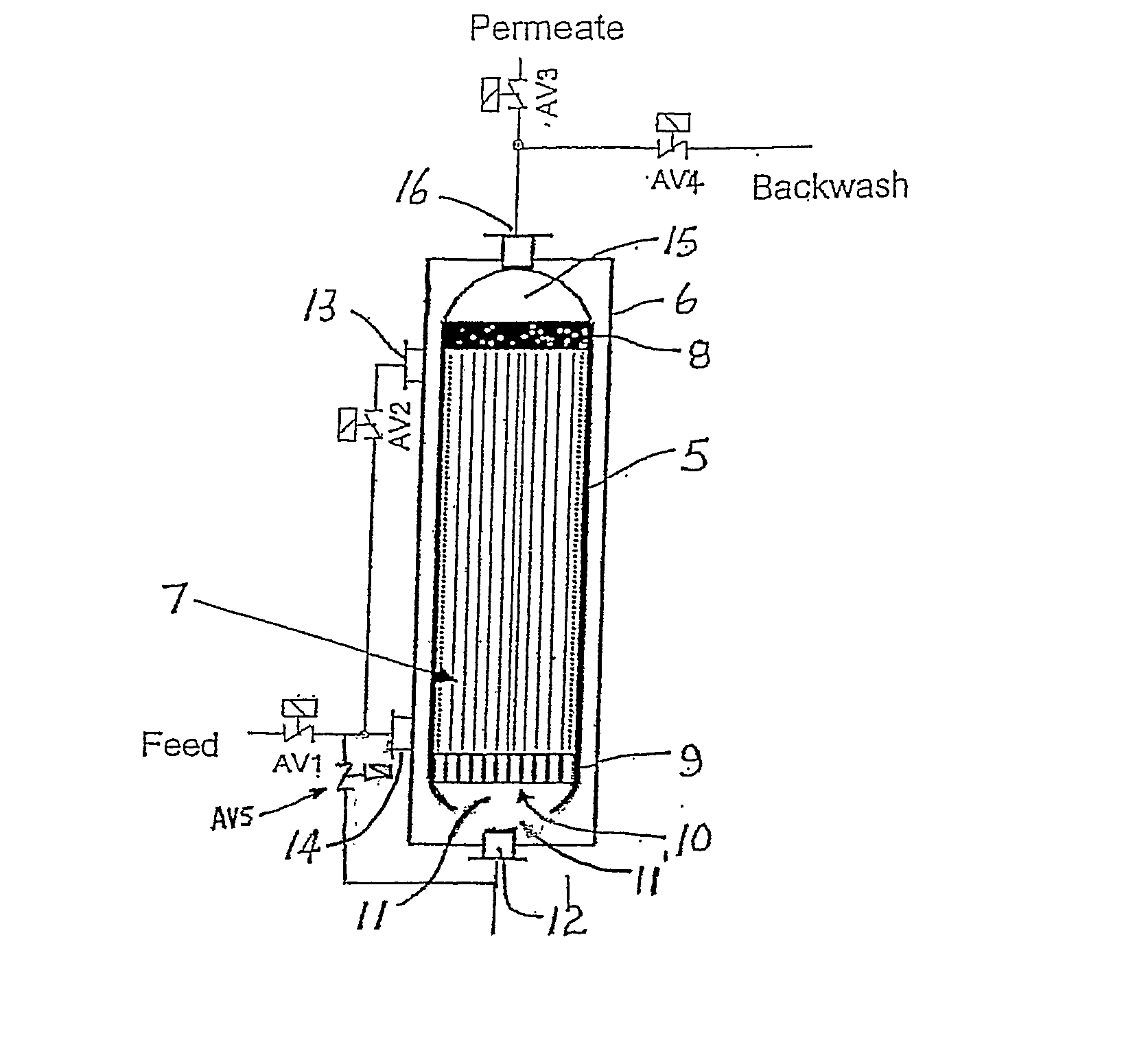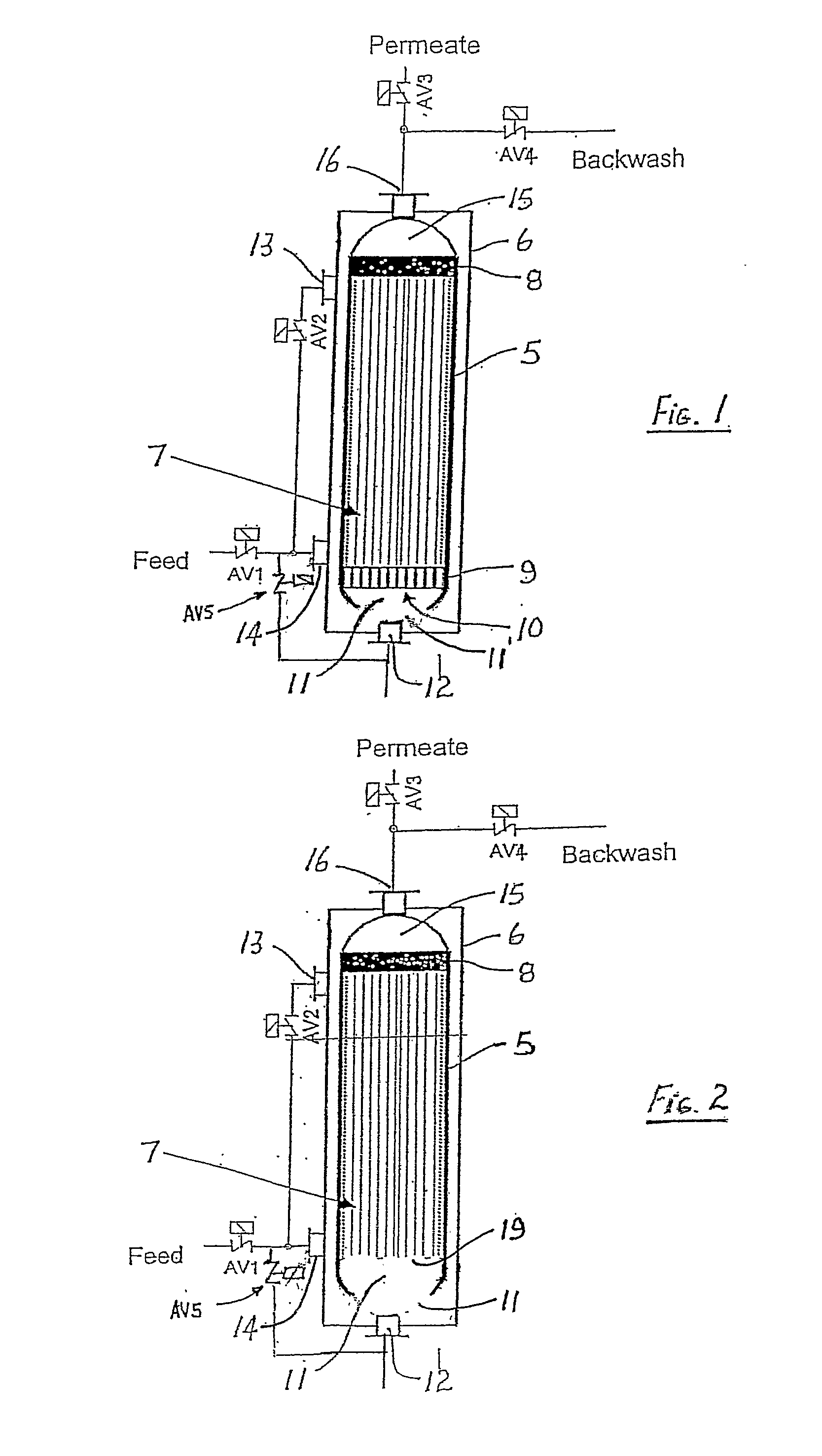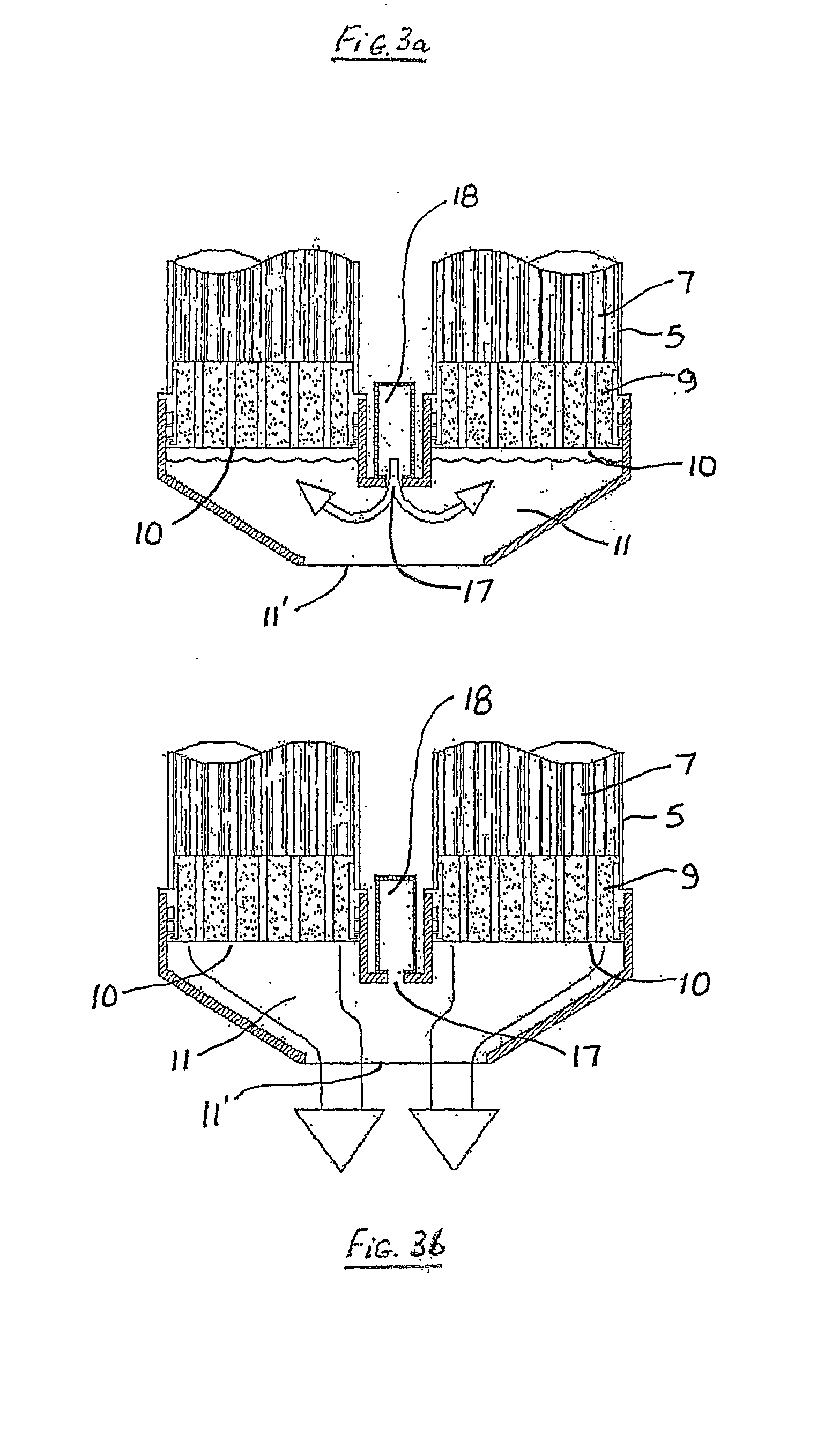Methods And Apparatus For Removing Solids From A Membrane Module
- Summary
- Abstract
- Description
- Claims
- Application Information
AI Technical Summary
Benefits of technology
Problems solved by technology
Method used
Image
Examples
Embodiment Construction
[0030] Referring to the FIG. 1, the filtration module 5 is mounted within a housing vessel 6 which contains the feed to be filtered. The filtration module 5 contains a bundle or bundles of hollow fibre membranes 7 extending between upper and lower headers 8 and 9, respectively. The lower header 9 is provided with a number of openings 10 communicating with the interior of the fibre bundle and an open-ended plenum chamber 11 having an opening 11′. An inlet / outlet port 12 is provided at the base of the module 5. Feed is supplied through ports 12, 13 and 14 under the control of valves AV5, AV1 and AV2.
[0031] Permeate / filtrate is withdrawn through chamber 15 and port 16 under control of valve AV3. A backwash may also be applied through port 16 under the control of valve AV4.
[0032]FIG. 2 shows a similar arrangement to FIG. 1, however, in this embodiment the hollow fibre membranes 7 are suspended vertically from the upper header 8 and are not potted at their lower distal ends 19. The dis...
PUM
| Property | Measurement | Unit |
|---|---|---|
| Permeability | aaaaa | aaaaa |
| Velocity | aaaaa | aaaaa |
Abstract
Description
Claims
Application Information
 Login to View More
Login to View More - R&D
- Intellectual Property
- Life Sciences
- Materials
- Tech Scout
- Unparalleled Data Quality
- Higher Quality Content
- 60% Fewer Hallucinations
Browse by: Latest US Patents, China's latest patents, Technical Efficacy Thesaurus, Application Domain, Technology Topic, Popular Technical Reports.
© 2025 PatSnap. All rights reserved.Legal|Privacy policy|Modern Slavery Act Transparency Statement|Sitemap|About US| Contact US: help@patsnap.com



